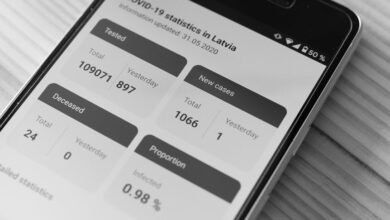Uncover Identity Traces 3510647253 3474657022 3509095522 3294915972 3791456456 3509957554

The numeric sequences 3510647253, 3474657022, 3509095522, 3294915972, 3791456456, and 3509957554 serve as potential identifiers within the digital realm. Each sequence could reflect distinct aspects of individual behavior and preferences. This analysis raises questions about the implications of such data. What risks accompany the exposure of these identity traces? Understanding these complexities is crucial for navigating the digital landscape effectively. The discourse on personal data protection is more relevant than ever.
Understanding the Significance of Numeric Sequences
How do numeric sequences shape our understanding of identity?
Numeric patterns serve as fundamental building blocks in significance analysis, offering insights into personal and collective identities.
By examining these sequences, one can discern underlying structures and relationships that define individual experiences.
The interplay of numbers reveals the complex tapestry of identity, emphasizing the importance of data in shaping perceptions and fostering a sense of freedom and individuality.
Analyzing Identity Traces in the Digital Landscape
As digital interactions proliferate, the traces of identity left behind in online environments become increasingly significant for understanding contemporary selfhood.
Analyzing digital footprints reveals patterns of behavior, preferences, and interactions that shape individual identity. This process raises critical questions regarding data privacy, as users navigate a landscape where their information is constantly collected and analyzed, emphasizing the need for awareness and control over personal data.
Risks Associated With Exposure of Personal Information
The accumulation of digital footprints inevitably leads to an increased risk of exposure of personal information, which can have profound implications for individuals.
Data breaches often compromise sensitive data, exacerbating privacy concerns and leaving individuals vulnerable to identity theft and fraud.
The erosion of personal privacy can undermine civil liberties, highlighting the necessity for heightened awareness and proactive measures in an increasingly interconnected digital environment.
Strategies for Protecting Your Identity Online
While navigating the complexities of the digital landscape, individuals must adopt proactive strategies to safeguard their identities online.
Effective password management is crucial, involving the use of unique, complex passwords for different accounts.
Additionally, secure browsing practices, such as utilizing Virtual Private Networks (VPNs) and avoiding public Wi-Fi for sensitive transactions, further mitigate risks.
Implementing these measures enhances personal security in an interconnected world.
Conclusion
In the intricate web of the digital landscape, numeric sequences serve as fingerprints of individual identity, each revealing distinct patterns of behavior and preference. However, just as a spider must navigate its own web with care to avoid entrapment, individuals must remain vigilant in managing their personal data. By adopting robust strategies for online privacy, they can safeguard their identity against the lurking threats of exposure and identity theft, ensuring their digital presence remains a protected asset rather than a vulnerable target.




